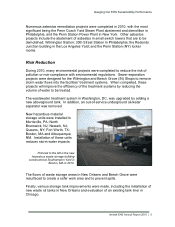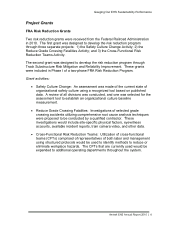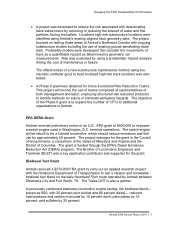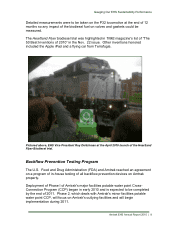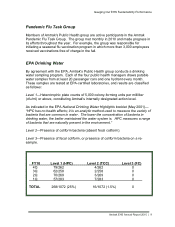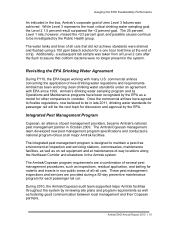Amtrak 2010 Annual Report Download - page 16
Download and view the complete annual report
Please find page 16 of the 2010 Amtrak annual report below. You can navigate through the pages in the report by either clicking on the pages listed below, or by using the keyword search tool below to find specific information within the annual report.
Gauging Our EHS Sustainability Performance
Amtrak EHS Annual Report 2010 | 15
electronic, and submit it in accordance with the instructions on the form. All
personal information is redacted by NASA, and NASA will mail a receipt to the
employee. Reports must be initiated within three calendar days—not counting
weekends and federal holidays—from the date of the incident.
Amtrak’s East and West PRTs, which include members from labor, management
and the FRA, will analyze reports of close calls to identify trends and sources of
risk and recommend corrective actions to address them. Members include
Transportation management/supervision, as well as train managers, road foremen,
yard masters, conductors, and engineers. The PRTs will distribute reports on
trends and other information for use by stakeholders and will track corrective
actions to measure the system’s impact on safety.
The pilot program will be limited to yard movement, and target locations include
Southampton Yard in Boston; New Haven Parcel G; Sunnyside Yard in Long
Island City, NY; Penn Coach Yard and Race Street Engine House, Philadelphia;
Washington, DC; Miami; Los Angeles; Chicago; and Seattle.
Chemical Task Force
Amtrak’s Chemical Task Force (CTF) reviews and approves all new chemical
products for use at Amtrak sites. The CTF also decides if new chemical product
testing is required; investigates environmental, safety, or health concerns
regarding currently approved chemical products; and maintains the electronic
Approved Chemical Book.
The CTF is currently chaired by Don Reilly of the Mechanical department.
Members are from a cross-section of departments, including Mechanical,
Engineering, Transportation, Environmental Health and Safety (EHS), Materials
Control, and Purchasing.
In 2010, a transition began that will require chemical approval requests to be
processed through Amtrak’s Ariba System (e-trax). This change should provide
better tracking of approval request progress. It is anticipated that the transition will
be completed in 2011.
A total of 46 chemical products completed the chemical review process last year:
42 were approved for use or for test use; one was approved for contractor use
only; and three were disapproved. Approval requests were for chemical products
with diverse uses such as cleaning products; odor control products; anti-bacterial
hand cleaners; lubricants; adhesives; water treatment chemicals; and welding
rods.


